Headlight Anatomy
There are multiple variations of P1 headlights, but they all contain the same five lighting components: high beam, low beam, turn signal, running light, and city light.
The following picture shows the first style of light which can be found on 2004.5-2007 S40s and V50s, 2007-2010 C30s, and 2006-2010 C70s. While the style is the same, the general headlight shape is slightly different for the C30s and C70s, so they are not cross compatible.
The low beam sits behind a projector lens and Volvo offered a bi-xenon upgrade, sometimes referred to as hid headlights, from the factory. Unlike other variants of the P1 Volvo headlight, the city light bulb resides in the same reflective bowl as the high beam. Therefore, it is common for the city light bulb to be burnt out from overheating if the high beams are excessively used.

The second version of the P1 Volvo headlight could be found on 2008-2012 S40s and V50s. The general layout is the same as the previous version headlight, but the city light has been relocated into a small vertical section, separating it from the high beam.
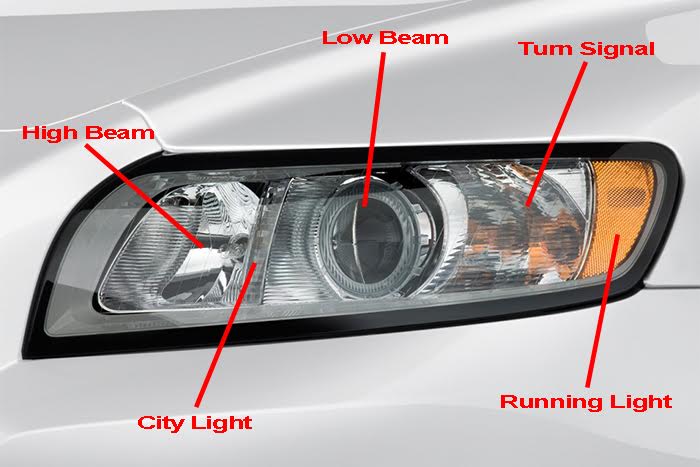
The third style of headlights for P1 Volvos only came on 2011-2013 C30s and C70s. Along with the bulkier shape, the city light was once again relocated. Models equipped with these headlight assemblies also came with optional active bending bi-xenons which turn the low beam projectors with the wheels.
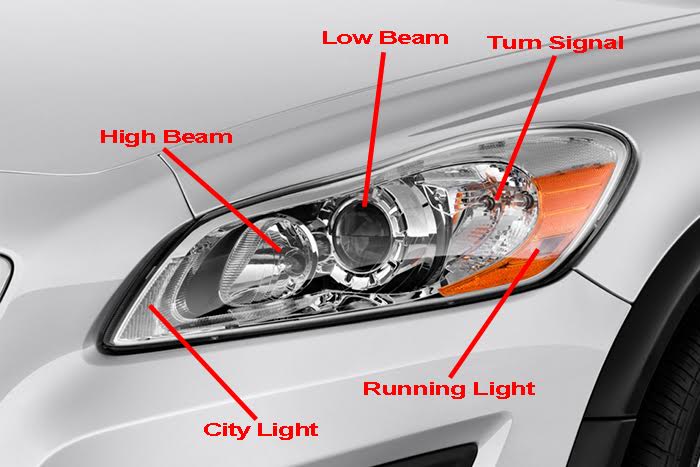
How to tell if your P1 Volvo is equipped with bi-xenons?
There are a number of ways to decipher if a vehicle is equipped with xenon lights, the most obvious being to observe the low beam output and color. However, there are a number of aftermarket HID kits available, making it hard to distinguish the difference between what is factory and what is not. The easiest way to tell is by looking for a blue tinted ring around the projector beam.
The bi-xenon headlights on all P1 Volvos have a motorized cutoff plate behind the projector lens. When the high beams are activated, this cutoff plate lowers exposing more of the xenon bulb and a significantly more intense light output.
The Light Switch
Along with multiple variants of headlights, there are also multiple headlight switches. For North American cars which do not require dimming foglights, the most common style switch can be seen below.
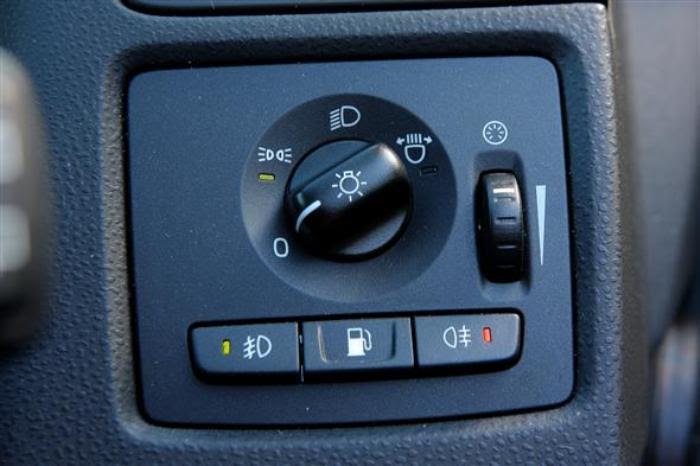
When the switch is pointing towards the "0" at the 8 o'clock position, the daytime running lights (DRLs) are activated. The low beams, city lights, and running lights will all be illuminated when the DRLs are on, however, the high beams can only be flashed and not fully activated.
The 10 o'clock position on the light switch is for parking lights. Only the city lights and running lights will illuminate when the switch is in this position. Be mindful of using the parking lights, as they do not shut off when the car is turned off. Many people have walked away from their car leaving the parking lights on, only to return to a dead battery.
At the straight up 12 o'clock position, the main headlights are on. Low beams illuminate with their full brightness and the high beams can be engaged by pulling the high beam stalk on the steering wheel.
For vehicles equipped with active bending headlights, there is an additional switch option at the 2 o'clock position. This allows the low beams to turn with the steering wheel and help illuminate turns.
The dial on the right of the light switch adjusts cabin display lighting brightness. This includes the gauge cluster, radio display, and center console button back lighting.
Vehicles with front fog lights will have a button on the lower left of their light switch. The fog lights can be turned on when the light switch is in any position. However, fog lights will turn off when the high beam are activated. This is a legal requirement since many regions limit no more than 4 projecting light sources on the front of a vehicle. When the high beams are activated, only the high beams and low beams remain illuminated.
The lower right button is for the rear fog light. The rear fog light is a single light located on the driver's side of the vehicle. Designed to notify other drivers of the passing corner of the car, the rear fog light can be blindingly bright and it is advised to only use this light during heavy rain or fog.
Daytime Running Lights
As mentioned above, the DRLs are visually no different than the standard headlights, though they are slightly dimmer. Many people are annoyed by the lights constantly being on, especially when the majority of their driving is during the well-lit day.
So long as your region does not require daytime running lights, your local Volvo dealer can disable them through a software update. Provide them with software number 30679690 and expect to pay anywhere from $20 for the software alone to 120 for software and labor. By only using your headlights at night or in rain, you will be saving money in the long run.
Homesafe Lighting
Homesafe lighting is a unique feature that modern Volvos have. Once the car has been shut off, pulling the high beam stalk will turn on the low beams and fog lights for a set period of time. The concept of homesafe lighting is that you can illuminate your walkway until you are safely in your house.
The homesafe lights will remain on for either 30, 60, or 90 seconds. You may set the time by accessing the homesafe lighting option through the car's menu.
Car settings...

Homesafe light. duration...
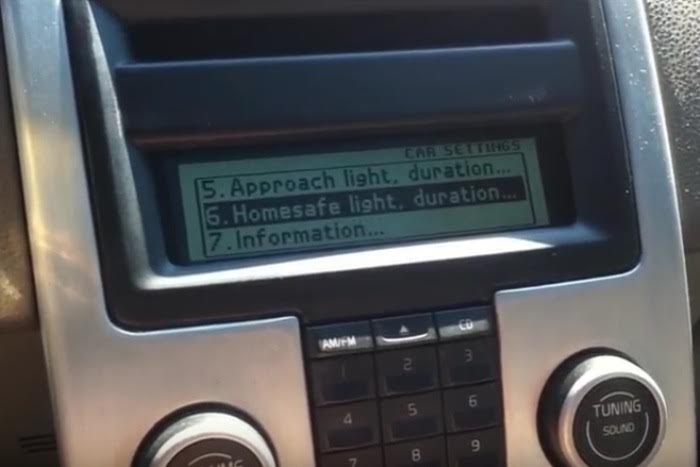
30, 60, and 90 second time intervals.

Headlight Removal
Whether you are replacing bulbs or removing the bumper, the headlights must be removed from the car. Luckily, Volvo made this task super easy.
Step 1: With the car off and the key removed from the ignition, open the hood and locate the pins which hold the headlights in place.
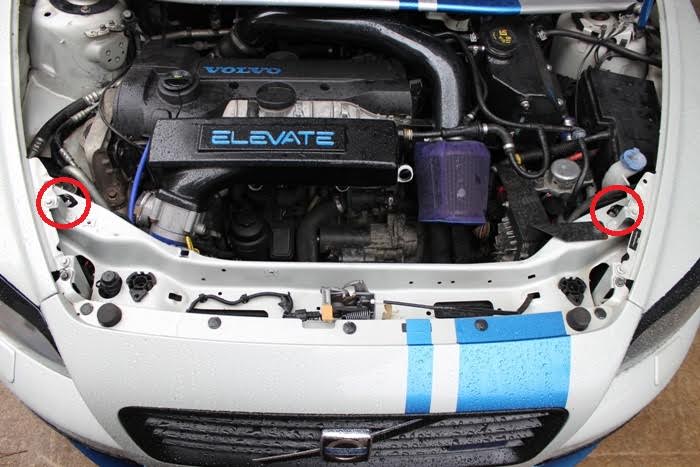
Step 2: Pull the pin straight upwards.
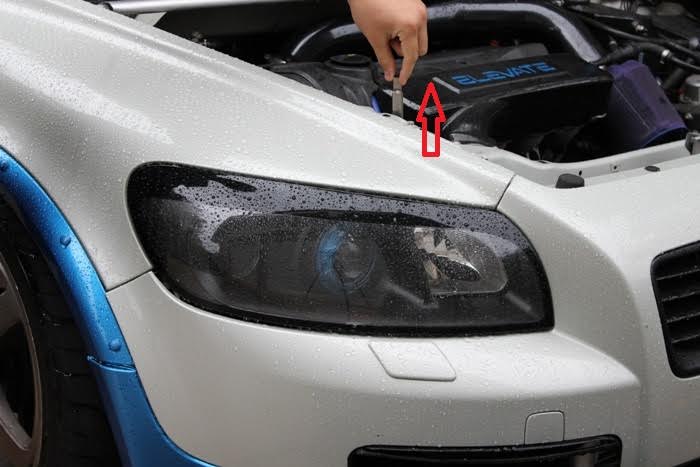
Step 3: With the pin removed, reach through the engine bay and push the headlight outwards.
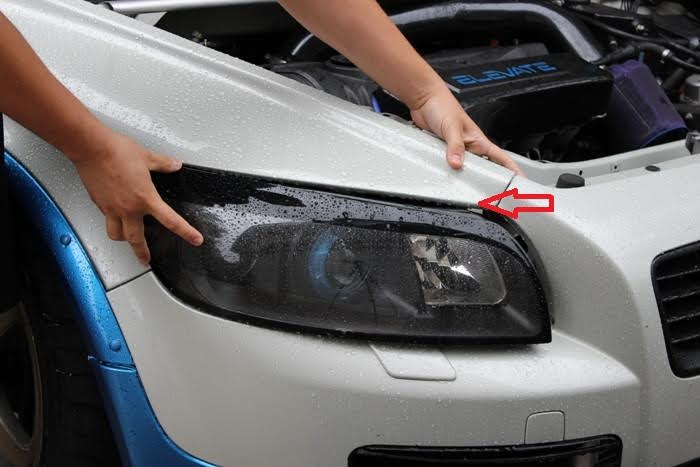
Step 4: Wiggling it back and forth, the entire light should slide out.
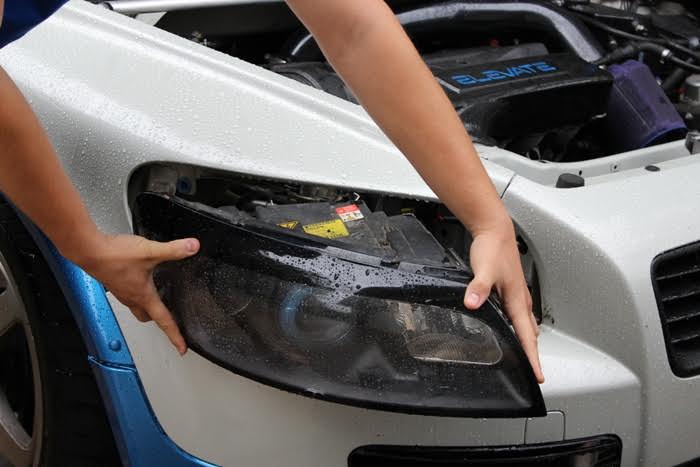
Step 5: Before completely removing the headlight, disconnect the electrical wiring clip from the back of the assembly.
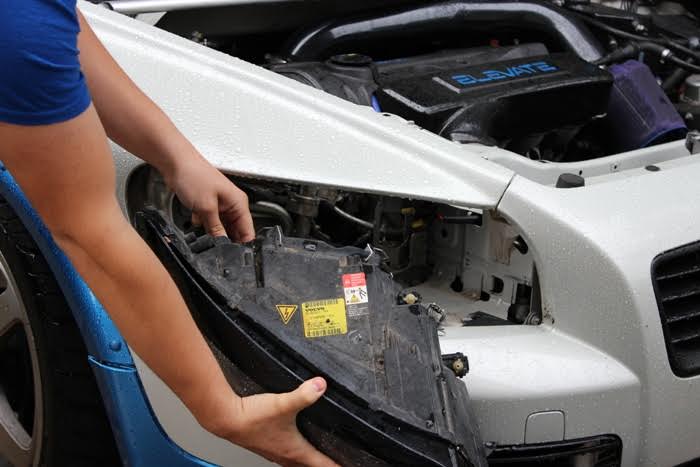
Step 6: When reinstalling the headlight, be certain to line up the peg on the headlight with this blue ring on the fender.
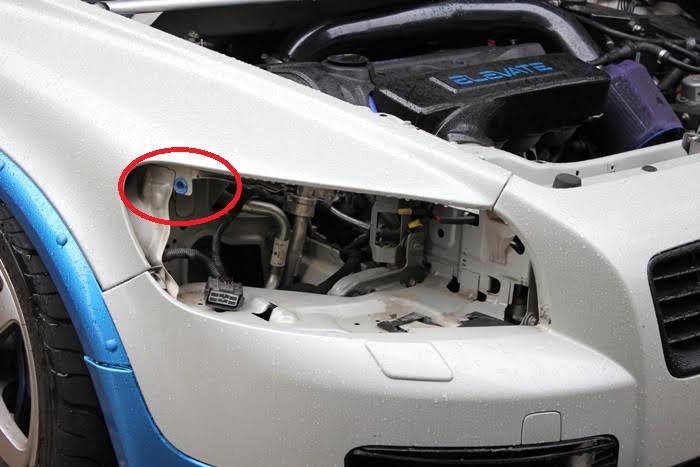
Bulb Replacements and Upgrade Options
FCP Euro offers a number of options for replacing and upgrading the bulbs in your headlight assembly. Always remember to wear gloves when replacing bulbs and never touch the glass.
Low Beam Halogen
The low beam halogen lights use H11 bulbs.
Low Beam Xenon
The low beam xenon lights use D2S HID bulbs. Vehicles with adaptive active bending lights use D3S HID bulbs. Be exceptionally careful when changing out HID (high intensity discharge) lights, as they draw a lot more power than standard halogen bulbs.
Volvo Headlight Bulb - Genuine Volvo 983581
Volvo Headlight Bulb (S60 XC90 C30 C70) - Genuine Volvo 31290593
High Beam
Depending on your model year and lighting options, the high beam bulbs may require H7, H9, or 9005 bulbs. Examine the back of the bulb, reference your owners manual, or check FCP Euro's fitment guide to determine the exact bulb that you need.
Volvo Headlight Bulb (H7 55W) - Genuine Volvo 989829
Volvo Headlight Bulb 55W - Genuine Volvo 989838
Volvo Headlight Bulb - Genuine Volvo 989826
Turn Signal
Volvo turn signals use an amber 7507 bulb. However, you may replace these using the Elevate mirrored turn signal bulbs. They illuminate amber, but remain silver when off, therefore avoiding the "egg yolk" orange reflection from the assemblies.
City Lights and Running Lights
Volvo city lights and running lights use 194 bulbs. These may also be upgraded to LEDs for a more modern appearance. Please note that if you are upgrading to LED city lights, it is suggested to find regulated bulbs which will not burn out from the heat of the high beams.











